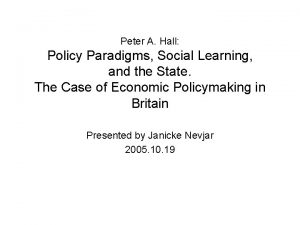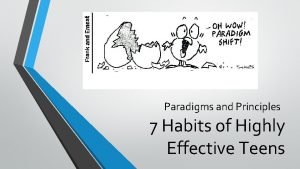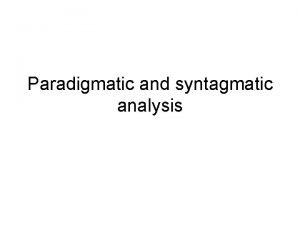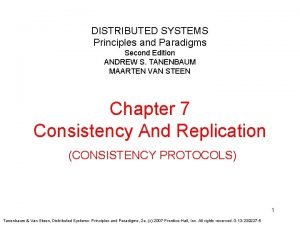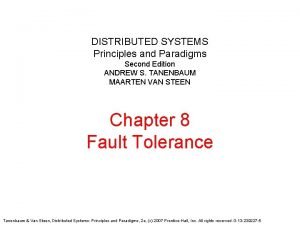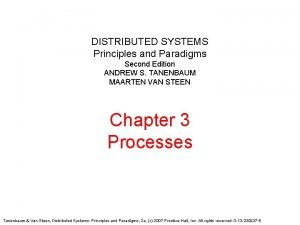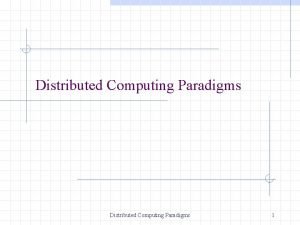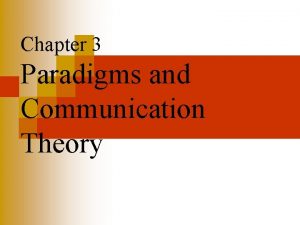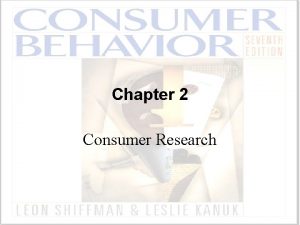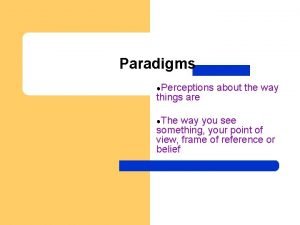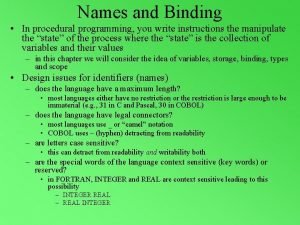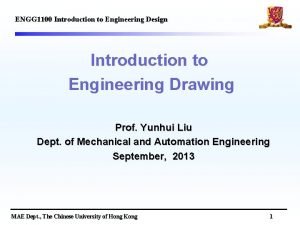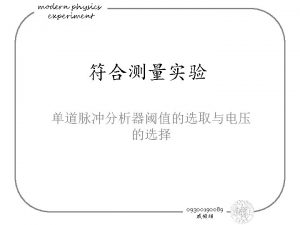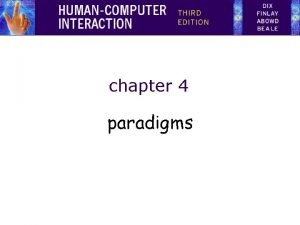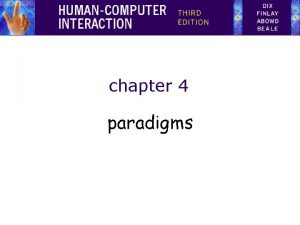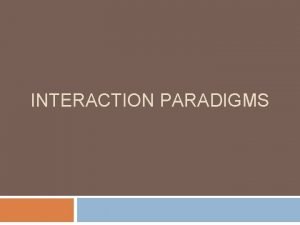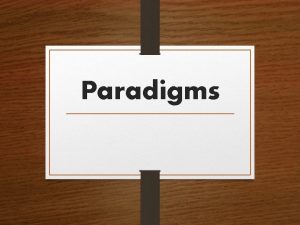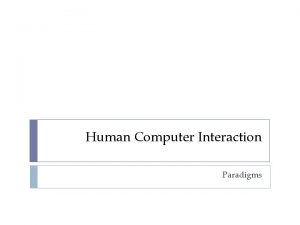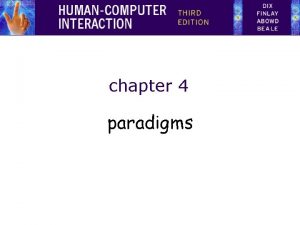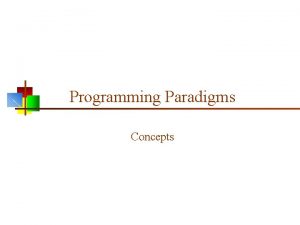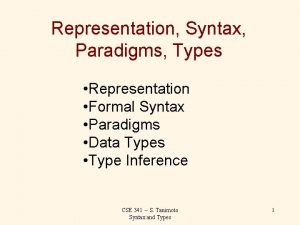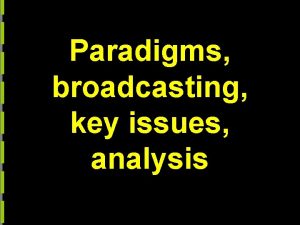Name the Experiment Paradigms in Physics www physics















- Slides: 15

Name the Experiment Paradigms in Physics www. physics. oregonstate. edu/portfolioswiki Corinne A. Manogue David Roundy Emily van Zee

Abstract We introduce a series of activities to help students understand the partial derivatives that arise in thermodynamics. Students are asked to construct thought experiments which would allow them to measure given partial derivatives. These activities are constructed with several learning goals in mind, e. g. to help students to see that the quantity held constant—the in —is an experimental control or constraint, and to see how Maxwell relations can be useful. We are analyzing classroom video to find out what kinds of reasonings students are actually employing during these activities.

Draw and describe an experiment represented by this partial derivative.

Answer This experiment is much easier to imagine if we turn the derivative upside-down. In this case, we change the pressure on an insulated piston, for instance by putting weights on it, and measure how much its temperature changes with a thermometer.

Student Learning Opportunities • Understanding derivatives as experiments. • Since entropy is being held fixed, this corresponds to an adiabatic process, in which the system is thermally insulated from its environment. We are changing the temperature, which students often find confusing, since we are intentionally not heating the system. • Students are surprisingly persistent in believing that the quantity held constant need not be specified. We (hopefully) help them to see this as the controlled variable in an experiment. • Recognizing that the inverse of a derivative is just the derivative with top and bottom inverted

Draw and describe an experiment represented by this partial derivative.

Answer This is another adiabatic process, so imagine an insulated piston system. Change the pressure by placing weights on the piston. However, we don't have a way to directly measure the change in internal energy, and must work this out using the First Law. Since the change is adiabatic, there is no heating (Q=0), and the change in internal energy is equal to the quantity of work done, d. U = -pd. V, from which we can conclude mathematically that Now we can design a much easier experiment to measure the change in volume as we change the pressure adiabatically.

Student Learning Opportunities • Uses of the First Law • Our students seldom recognize the form of the work done mathematically, but they are able to express that they measure the work by seeing how the volume changes.

Draw and describe an experiment represented by this partial derivative.

Answer This example is more challenging, since we don't have a direct way to measure entropy itself. The key to these derivatives is recognizing thermodynamic definition of entropy We need to change the volume at fixed temperature, and measure the energy transferred between the system and environment by heating. Arrange a thermally insulated system with a thermometer and heater (a resistor), and measure how much energy is needed to keep its temperature from dropping as it is expanded. This would require that the temperature change slightly, such that the

Student Learning Opportunities • Exploring what it means to change the entropy. • This experiment is particularly tricky because temperature is held fixed: when temperature is being changed, the experiment can be reduced to one of calorimetry, and since we begin the course with a simple calorimetry experiment, our students find those examples reasonably easy. • This example highlights the student assumption that fixed temperature will mean fixed entropy—i. e. no heating is going on.

Draw and describe an experiment represented by this partial derivative.

Answer We can construct a Maxwell relation involving this derivative from the Helmholtz free energy: From this, we can see that this “hard” derivative is just the same as the “simple‘” derivative we have already done, so we can do a far easier experiment to measure this

Student Learning Opportunities • Immediately after introducing Maxwell relations, we have a final name-theexperiment activity in which students use a Maxwell relation to find a second (ideally easier) experiment to measure a given partial derivative. We actually ask students to find two experiments for their derivative.

Narratives We are developing a narrative interpretation of videos of class sessions on Name the Experiment. The intent is to help interested instructors envision an interactive classroom culture, one in which students learn by talking with one another about what they think as well as by listening to and conversing with their instructor. This approach to documenting and interpreting learning experiences draws on the power of narrative to convey cultural values and practices. These narratives are written in the tradition of ethnography of communication (Philipsen & Coutu, 2004; van Zee & Minstrell, 1997). Ethnographers of communication examine cultural practices by interpreting what is said, where, when, by whom, for what purpose, in what way, and in what context. See a short paper about how/why to write narratives: van Zee & Manogue, Documenting and Interpreting Ways to Engage Students in ‘Thinking Like
 Name three lines
Name three lines Peter hall policy paradigms
Peter hall policy paradigms 4 paradigms of cognitive psychology
4 paradigms of cognitive psychology 7 habits paradigms
7 habits paradigms Paradigms and syntagms
Paradigms and syntagms Paradigms of interaction
Paradigms of interaction Distributed systems tanenbaum
Distributed systems tanenbaum Message ordering paradigms
Message ordering paradigms Distributed systems principles and paradigms
Distributed systems principles and paradigms Distributed paradigm
Distributed paradigm 3 paradigms
3 paradigms Interpretivism in consumer behaviour
Interpretivism in consumer behaviour Enemy centered paradigm
Enemy centered paradigm Binding in programming paradigms
Binding in programming paradigms Ktu programming paradigms notes
Ktu programming paradigms notes Development support communication
Development support communication

